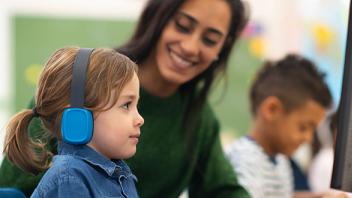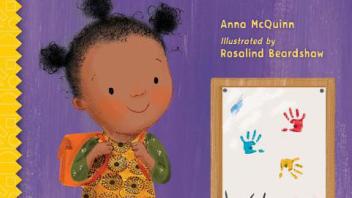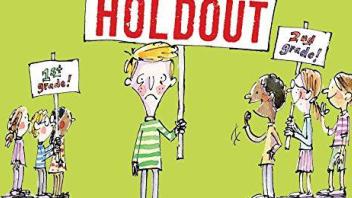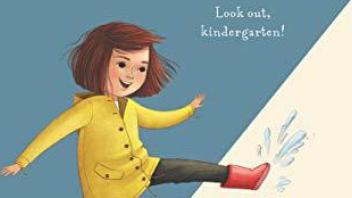Fall is on its way, and it’s time for the school year to begin — and not just for kids, but for parents and teachers, too.
We’ve got resources for parents to help them get their kindergarteners ready for the newness of school and to ease their older kids back into familiar school-day routines.
If you’re a teacher — whether a novice or an old pro — Reading Rockets has ideas and resources to help you get ready for the best school year yet.
Featured resources
Parent Engagement
Bright Ideas for Back-to-School Night … and Beyond
Especially for parents

Your child’s school
Who’s who at your child’s school
There are many people at your child’s school who are there to help your child learn, grow socially and emotionally, and navigate the school environment. You might want to keep this list handy all year long.
Open House: What does a good classroom look like?
Does your child’s school host an Open House before school starts? Here are some thoughts on what to look for that can set the right tone for a great school year.
Listen and look at back-to-school night
Back-to-school night is a great opportunity for families to learn more about their child’s school and teacher. Here are some signs to look for that indicate your child is in a place where good reading instruction can take place. (In English and Spanish)
What’s screening, differentiated instruction, and leveled text?
When the back-to-school bell starts ringing, parents often hear and read school-related terms that are unfamiliar to them. Here are three terms related to reading instruction that will give you a better understanding of what’s happening in your child’s classroom and what it all means for your young learner. (In English and Spanish)
Reading Instruction at Your Child’s School
All children deserve quality reading instruction that is based on research and best practices. How can you know if your child is getting good reading instruction at school? Find out what good reading instruction should look like and questions you should ask your child’s teacher.
Helping your child succeed at school
Easing back into school
Back-to-school is an exciting (and sometimes nervous!) time for students and parents. A few tips might help you and your child get off on the right foot. (In English and Spanish)
Helping your child succeed in school
Ten things to do to help your child succeed at school. (In English and Spanish)
Reading tips for parents in multiple languages
Download and print these one-page tip sheets available in English and 12 other languages: Arabic, Chinese, English, French, Haitian Creole, Hmong, Korean, Portuguese, Russian, Spanish, Tagalog, Navajo, and Vietnamese (currently available for pre-K through third grade). Tips for parents of babies and toddlers are available in English and Spanish.
English language learners
For families of English language learners
Visit our bilingual sister site, Colorín Colorado, for information on helping your child become a good reader and a successful student.
Children with learning and attention issues
Back-to-school tips for parents of children with special needs
Our Top 8 back-to-school tips for parents emphasize communication, organization, and staying up-to-date on special education news.)
New school year = rough transitions for some
“Back to school” has special meaning for Henry. Transitions are tough for him, so these first few weeks of getting adjusted are hard for everyone. I know things will eventually settle down, but I wish these this time of year could be easier. So many tantrums, so many tears.” What can parents of struggling students do during these first few weeks of school?
Building a good relationship with your child’s teacher
Get practical tips on fostering a sense of partnership with the teacher and administration to support your child’s education.
Organizational problems and the beginning of the school year
Find helpful tips and strategies to help your child with learning disabilities get organized for school.
Children’s books for back to school
Stories about the changing season, school days, and new friends can help ease kids into the school year. You’ll find some of our back-to-school favorites below, including stories that celebrate joyful, welcoming schools. To search for more books, use our Book Finder tool!
Themed Booklist
School Days
Themed Booklist
It’s Back-to-School Time!
Themed Booklist
New Month, New Friends, and New School Year!
Themed Booklist
Are You Ready? School’s Open!
Themed Booklist
Celebrating Kids Who Learn Differently
Themed Booklist
Books About Kids Who Find Reading Hard
Themed Booklist
Field Trips and Other Adventures
Themed Booklist
September Starts
Themed Booklist
Teachers Are Terrific!
For teachers: creating a welcoming, literacy-rich classroom

Literacy-rich environments
The literacy-rich environment emphasizes the importance of speaking, reading, and writing in the learning of all students. This involves the selection of materials that will facilitate language and literacy opportunities; reflection and thought regarding classroom design; and intentional instruction and facilitation by teachers and staff.
Classroom Libraries
A diverse, welcoming classroom library is a magnet for kids. Get tips on how to set up your classroom library to encourage book choice and support student learning.
Arranging your classroom
As a teacher, setting up your classroom is one of the most exciting parts of August! Where should the classroom library go? Where should the teacher desk go? How should the student desks be arranged?
Literacy centers
Literacy Centers
Literacy centers offer meaningful learning experiences where students work independently or collaboratively to meet literacy goals. Get the basics on how to set them up in your classroom.
Literacy centers: getting started
This lesson from ReadWriteThink gives teachers resources and guidance to establish four different centers: reading, listening, computer, and poetry.
A classroom layout for literacy centers
From Scholastic, find tips on setting up classroom centers for listening, guided reading, poetry, writing, buddy reading, word study, and more.
English language learners
How to Create a Welcoming Classroom Environment for ELLs
Your ELL students are adjusting to new ways of saying and doing things. As their teacher, you are an important bridge to this unknown culture and school system. Here are things you can do to help make your students’ transitions as smooth as possible.
Connecting with ELL Families
Multilingual families can be powerful partners on behalf of their children. Yet what these partnerships look like will be unique to each school setting and community — and may require some “thinking outside of the box.” This section includes some key tips and recommended resources from our sister site, Colorín Colorado.
Parent engagement
Parent involvement checklist
Does your school do a good job of reaching out to parents? Use this checklist to evaluate and improve parent-school partnerships.
Back-to-school online resources
- Back-to-School Resources for ELLs (Colorín Colorado)
- Back to School Guide (NEA)
- Back-to-school: A 4-week plan for a great start (Understood)
Especially for first year teachers
The first year of teaching is tough. Everything is new, from the students to school procedures to new relationships with colleagues, administrators and parents — not to mention lesson planning and classroom management. These resources can help you navigate your first year.
Teaching reading
Instructional Routines, Grouping, and the ELA Block
Whole class? Small group? Or one-on-one instruction? How much time for each component of reading? Get the basics on effective grouping for reading instruction and a flexible example of an ELA block.
Reading and Writing Basics
Explore our primer on the key components of reading, including oral language, phonemic awareness, decoding, orthographic mapping, fluency, vocabulary, comprehension, and writing.
Reading 101: A Guide to Teaching Reading and Writing
Core knowledge about reading is a key to effective literacy instruction. Our free, self-paced learning modules can help you deepen your understanding of the building blocks of reading and writing.
Children with learning and attention issues
September Thoughts: Reflections on a New School Year
Wise advice from LD expert and advocate Rick Lavoie. “As we lurch toward September, let me offer some advice that may be helpful as you attempt to make special needs kids in your class feel warm, welcome, and wanted. Using the word SEPTEMBER, I have written of nine concepts that I believe can help you in this effort.”
About Stephen — and fresh starts
Educator Brenda Dyck shares the story of Stephen and ponders the importance of offering a fresh start to every student who enters her classroom.
English language learners
English Language Learners and the Five Components of Reading
Learn how you can play to the strengths and shore up the weaknesses of ELLs in each of these areas: phonemic awareness, phonics, vocabulary, fluency, and comprehension.
Reading 101 for English Language Learners
Get the basics on how to support the literacy achievement of your English language learners. You’ll find instructional strategies based on the five components of reading as well as oral language and the role of students’ home language.
Resources for First Year ELL Teachers
Colorín Colorado has compiled this list to help new ELL teachers navigate their first year in the classroom. These resources may also be helpful for veteran teachers who are new to teaching ELLs.
Teaching tools
Reading Universe
Reading Universe is a free, innovative professional learning platform that provides evidence-based, step-by-step guidance, and tools for how to teach reading and writing. The site features our interactive taxonomy of reading skills, lesson plans, in-classroom videos, printable activities, and decodable texts. Reading Universe is for teachers, reading coaches, tutors, and caregivers — anyone who wants to help a child learn to read.
Target the Problem
This resource helps parents and classroom teachers understand the specific problems a child may be having with reading. You’ll find practical suggestions on what you (and kids themselves) can do to help students overcome or deal with their reading difficulties.
AFT Share My Lesson
This online resource from the American Federation of Teachers provides high-quality and effective lessons, useful information to use in the classroom, and professional development.












